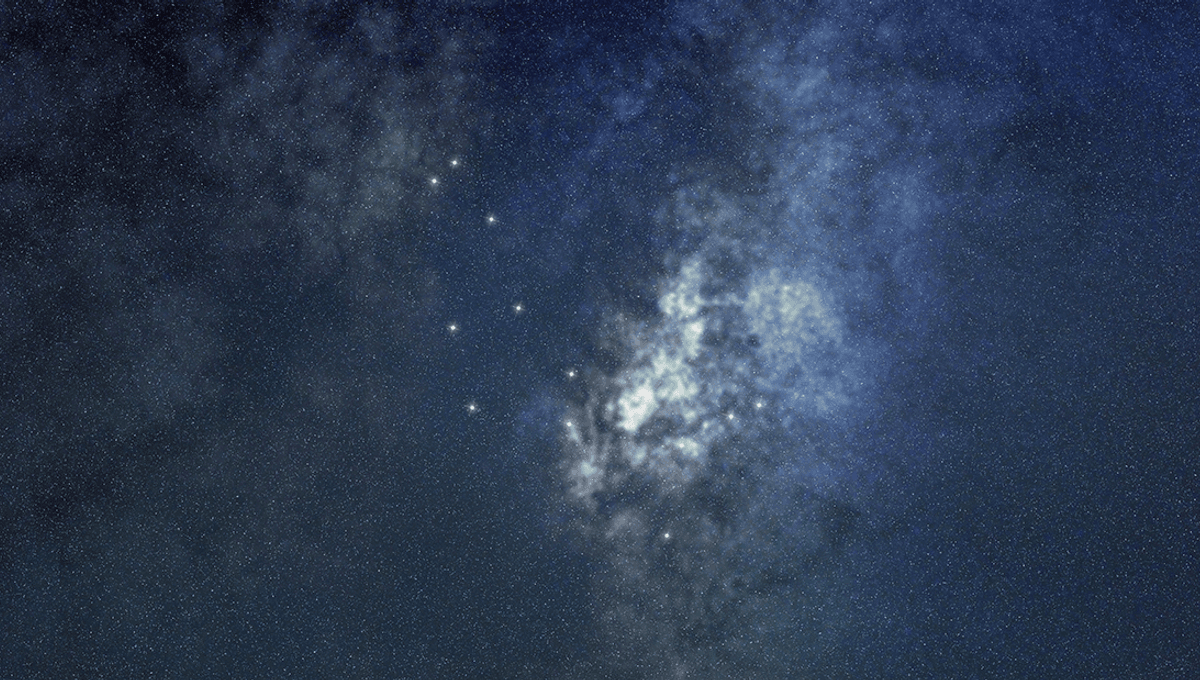Here’s what you’ll learn when you read this story:
-
Observations from NASA’s James Webb Space Telescope and other telescopes have shown what appears to be a supermassive black hole forming right between two merging galaxies.
-
There have been multiple hypotheses surrounding supermassive black hole formation, but these observations support the hypothesis that suggests these behemoths are the result of immense clouds of shocked and compressed gas collapsing in on themselves.
-
Future observations with Webb may finally confirm how supermassive black holes come into being.
Supermassive black holes lurk in almost every large galaxy, including our own, but their origins are more elusive. Did they appear after the demise of gargantuan stars in the early universe? Do they form from smaller black holes that merge? Is it possible they emerge from monstrous clouds of star-forming gas that collapse in on themselves? That last hypothesis might be onto something.
The pair of galaxies merging into what is now known as the Infinity Galaxy (so named because of its uncanny resemblance to the infinity symbol) is 8.3 billion light-years away, meaning we are seeing events unfold as they did that many billions of years ago. Between them is what astronomers now believe to be a supermassive black hole (SMBH) in its infancy. Whatever the object is, it is accreting tons upon tons of material, and supermassive black holes are known for their voracious appetites. Observations of this galaxy and the thing spawning in the middle might be the first hard evidence of a supermassive black hole being born.
Each of the galaxies that collided to form the Infinity Galaxy have their own glowing nuclei containing supermassive black holes, but the one supposedly forming in between is unrelated to either of them—its source is apparently something else. The mystery convinced astronomers Pieter van Dokkum of Yale University and Gabriel Brammer of the University of Copenhagen, who discovered the nascent black hole while analyzing images from the COSMOS-Web survey of NASA’s James Webb Space Telescope, that what they were seeing was no ordinary star.
Van Dokkum and Brammer backed their findings up by poring over data from observations made by the W.M. Keck Observatory, the Chandra X-Ray Observatory, and more data from the archives of the National Radio Astronomy Observatory’s Very Large Array. It was already strange that this black hole was not hiding in the nucleus of a galaxy, never mind that it was at the beginning of its life. Shrouded by clouds of gas between the two galaxies was most likely a supermassive black hole that probably formed from gas that had been shocked and compressed during the galactic merger, then collapsed in on itself. Witnessing one being born is unprecedented.
“The gas spans the entire width of the system and was likely shocked and compressed at the collision site,” they and their colleagues said in a study soon to be published in the Astrophysical Journal Letters. “We suggest that the SMBH formed within this gas in the immediate aftermath of the collision, when it was dense and highly turbulent.”
There are two main hypotheses for how supermassive black holes form. The “light seeds” theory claims that supermassive black holes are the product of black holes that form after massive stars go supernova, collapsing in on themselves in violent explosions. These black holes then merge into larger black holes. The problem is that it would not only take an extremely long time for a supermassive black hole to form this way, this theory also cannot explain the existence of supermassive black holes, already observed by Webb, which were around when the universe was still young.
The “heavy seeds” hypothesis suggests that immense clouds of gas that collapse usually form stars, but sometimes, the gases collapse directly into supermassive black holes. This is the theory that seems to align with the more recent observations. About a few hundred million years after the universe dawned, clouds of gas in the middle of what would become galaxies collapsed. Hiding in those gaseous clouds were the seeds of supermassive black holes, whose powerful outflows and magnetic storms caused surrounding gas to collapse into multitudes of new stars. This explains the high populations of stars around galactic nuclei.
“If our proposed scenario is confirmed, the Infinity galaxy provides an empirical demonstration that direct-collapse formation of SMBHs can happen in the right circumstances—something that has so far only been seen in simulations and through indirect observations,” Brammer and van Dokkum said.
More observations with Webb and other telescopes could finally reveal what a supermassive black hole’s baby pictures look like.
You Might Also Like
Source link
